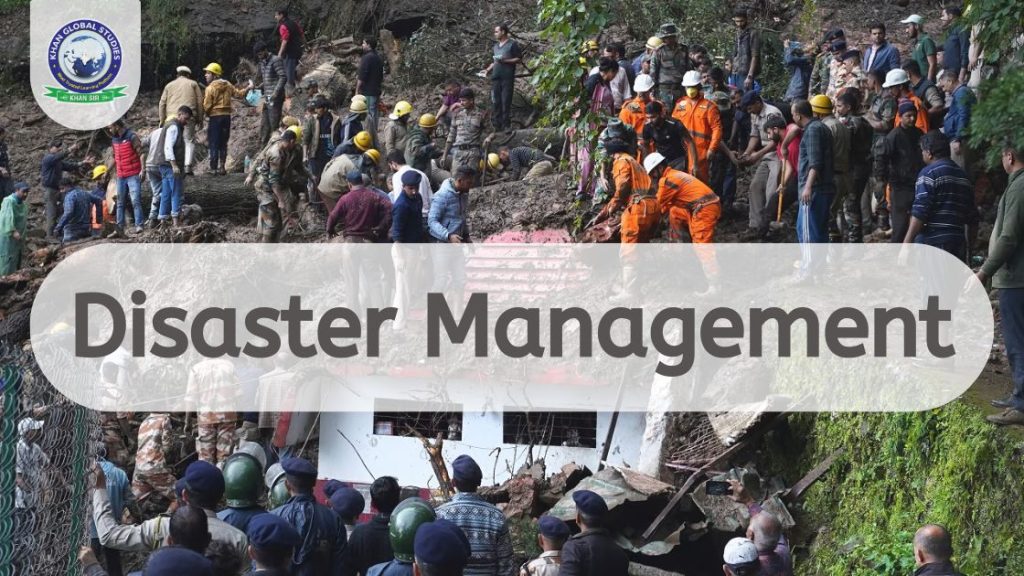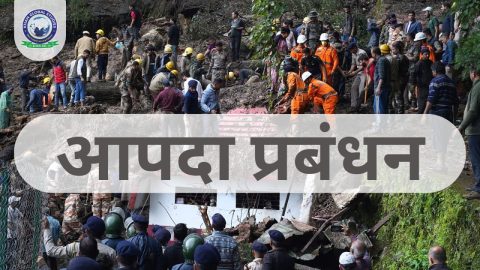A disaster is an event that can cause extensive damage to life and property. India is highly susceptible to natural disasters such as floods, droughts, earthquakes, cyclones, and storms. Additionally, man-made disasters such as fires, chemical spills, and industrial accidents also pose a threat. A comprehensive disaster management framework has been established in India to deal with these disasters.
Types of Disasters: Natural and Man-made
Disasters are devastating events that can significantly impact our lives and property. India, being prone to various geographical and environmental factors, faces a multitude of disasters that can be broadly categorized into Natural and Man-made.
Natural Disasters:
These disasters arise from natural phenomena and are beyond human control. Let’s delve into some prominent natural disasters:
- Earthquakes: These are tremors or shaking of the Earth’s surface, typically caused by tectonic plate movements. Earthquakes can be catastrophic, causing building collapses, widespread damage, and loss of life.
- Floods: These are inundations of land caused by excessive water levels, often due to heavy rainfall, overflowing rivers, or melting glaciers. Floods can submerge vast areas, disrupt transportation, damage infrastructure, and lead to agricultural losses.
- Droughts: These are periods of abnormally dry weather characterized by a significant decrease in rainfall. Droughts can severely impact agriculture, water availability, and food security, leading to economic hardship and social unrest.
- Cyclones: These are intense rotating storms that form over warm ocean waters. Cyclones bring strong winds, torrential rains, and storm surges, causing widespread destruction and loss of life, particularly in coastal regions.
- Landslides: These are the downward movement of soil, rock, or debris on slopes, often triggered by heavy rainfall, earthquakes, or human activities. Landslides can bury villages, block roads, and disrupt infrastructure.
- Tsunami: These are giant waves generated by underwater earthquakes, volcanic eruptions, or landslides. Tsunamis can travel at incredible speeds, reaching coastal areas with devastating force, causing widespread damage and loss of life.
Man-Made Disasters:
These disasters are caused by human activities or negligence. Let’s explore some common man-made disasters:
- Fires: These are uncontrolled combustion events that can damage property, endanger lives, and release harmful pollutants into the environment. Fires can be caused by various factors, including electrical faults, arson, or improper storage of flammable materials.
- Chemical Spills: These occur when hazardous chemicals leak or escape from storage containers, transportation vehicles, or industrial facilities. Chemical spills can contaminate water sources, pollute the environment, and pose serious health risks to humans and wildlife.
- Industrial Accidents: These incidents involve failures or malfunctions in industrial processes, leading to explosions, fires, toxic gas releases, or other hazardous events. Industrial accidents can cause widespread damage, environmental contamination, and loss of life.
- Transportation Accidents: These involve collisions, derailments, or other incidents involving vehicles, trains, or aircraft. Transportation accidents can result in injuries, fatalities, property damage, and environmental contamination.
- War and Conflict: These involve armed confrontations between nations or groups, leading to widespread destruction, loss of life, displacement of populations, and environmental degradation.
Phases of Disasters
Disaster management is divided into four phases:
- Prevention: This focuses on reducing the risk of disasters. It includes building infrastructure, restricting construction in risk-prone areas, and disaster education.
- Preparedness: This focuses on planning and gathering resources to mitigate the effects of a disaster. It includes creating emergency plans, training rapid response forces, and establishing early warning systems.
- Response: This focuses on the actions taken during a disaster. It includes conducting rescue and relief operations, providing assistance to affected people, and assessing damage.
- Recovery: This focuses on the post-disaster phase, which involves restoring the lives of affected people and rebuilding infrastructure.
Scales of Disasters
Disasters are classified based on the scale of their impact:
- Local Disaster: This affects a small area and is managed by local authorities.
- State Disaster: This affects a large area and is managed by the state government.
- National Disaster: This affects the entire country and is managed by the central government.
Prevention and Mitigation of Disasters
Several measures can be taken to prevent and mitigate disasters:
- Risk Assessment: Identifying and assessing disaster-prone areas.
- Land Use Planning: Building disaster-resistant infrastructure and restricting construction in risk-prone areas.
- Disaster Education: Raising awareness about disasters and training people on how to respond to emergencies.
- Technical Support: Developing and implementing advanced technologies for disaster management.
- International Cooperation: Collaborating with other countries to share knowledge and experience in disaster management.
Conclusion
Disaster management is an ongoing process that encompasses prevention, preparedness, response, and recovery. The Indian government is committed to strengthening disaster management and making the country more resilient to disasters.





